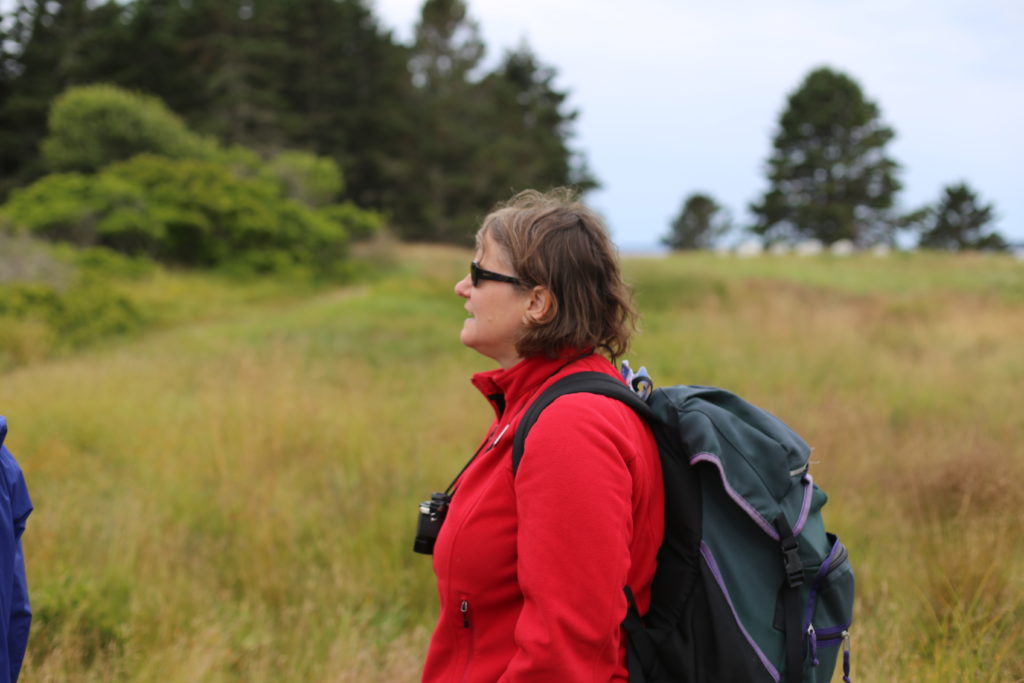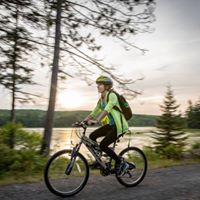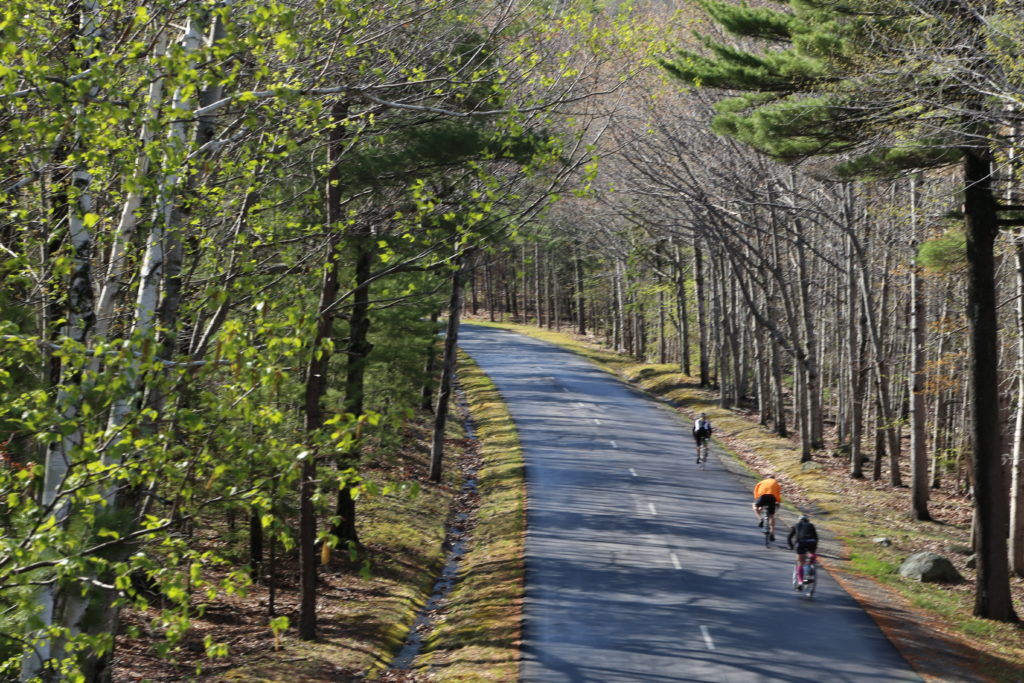
Courtesy of Friends of Acadia.
Take a few minutes to talk to Stephanie Clement and her love for Acadia shines out at you. She feels “lucky to be a part of such a group who all give back with financial resources or volunteering to a park they love. It makes for a unique experience.” That’s why she’s committed her help to helping preserve this place as the Conservation Director at Friends of Acadia. Friends of Acadia preserves, protects, and promotes stewardship of the outstanding natural beauty, ecological vitality, and distinctive cultural resources of Acadia National Park and surrounding communities for the inspiration and enjoyment of current and future generations.Acadia faces big changes in the looming climate crisis
With an eye on the conservation of the park, Stephanie is very familiar with the impacts of climate change both on the park and the wider impacts across Maine. According to the University of Maine’s Climate Change Insitute, there’s a wide variety of changes underway in Acadia. The average annual temperature for the coast of Maine is up by 3 degrees Farenheight from 1895, and precipitation is up by 6 inches annually. In the Gulf of Maine, the surface temperature is 3 degrees higher. Sea level rise and severe weather events are already impacting Acadia’s coastal infrastructure. Rainfall patterns are changing, and significant storms wash out the park’s historic trails and gravel roads. Sea action during intense Nor’easter storms occasionally deposits rocks on the road near the park’s Seawall area, which then has to be plowed before residents and visitors can pass. And the park’s iconic coastal Ocean Drive and parallel Ocean Path are now at greater risk for erosion, and visitor safety is threatened as people are attracted to viewing powerful waves.
Driven by a love for Acadia
Stephanie Clement’s clear drive to champion the park is born out of her love for it. She appreciates that Acadia is “among our large natural national parks, a truly family-friendly destination with a wide diversity of trails accessible to the youngest and oldest visitor.” That said, there are also the iron rung trails for people looking for a challenge. Acadia is full of places that both the super young and older folks can enjoy. She also loves how the park is surrounded by villages with historic charm and plenty of amenities where you can bike along carriage roads that are car-free. Or ride a horse! She also appreciates that the park has a range of activities from climbing cliff faces that look out over the ocean to enjoying a meandering drive along the coast. But if Stephanie was going to pick a single “don’t miss” activity, she would recommend anyone visiting should experience the early morning or late afternoon in the park when it is quieter and fewer people are there so you can really have it to yourself. Additionally, she recommends everyone take the time to visit different sections of the park and not just drive Ocean Drive to the top of Cadillac mountain and stop at Jordan Pond House for lunch. That’s a great trip, but the park has so many other wonderful parts including the miles of carriage trails, Schoodic Peninsula and Isle Au Haut. And if you visit in the winter when the snow is good the carriage roads offer unparalleled cross country skiing.
Friends of Acadia ensures the park will endure
Restoration is central to the mission of Friends of Acadia and they are committed to teaming with the Park Service on several projects. For example, they are funding the restoration of a wetland in an area that was a septic system next to a restroom. In that process, they have to consider native plant species that are more likely to thrive with temperature increase due to climate change, instead of just relying on the surveying and replanting the existing species in the area. Friends of Acadia is also working to balance park visitors interest and the need to protect the park. With record levels of visitation in the past three years, roughly 3.5 million visitors per year, the National Park Service has developed a transportation plan designed to lower the impact of cars on the park. The idea is to help maintain a positive visitor experience, reduce traffic congestion, and improve visitor safety. The plan has a lot of innovative strategies, including establishing reservation systems for key destinations at peak times for visitors with cars. But, if you want to hike, take a bus, or bike into the park, you don’t need a reservation. Friends of Acadia is supportive of the transportation plan and will be working with the park and other partners over the next ten years to ensure successful implementation. The funds generated through the reservation system will bolster other conservation efforts. They also help to fund the Island Explorer Bus System along with the National Park Service, the state, local businesses, and L. L. Bean. That system will be a large part of promoting sustainable visitation of the park, and they are in the process of identifying how much it will need to expand to accommodate the new transportation plan needs. In the past, they have also worked on village connector trails so people can head from their home or hotel right into the park. Thanks to Stephanie and her colleagues at Acadia, the future of the park is looking brighter despite the onslaught of climate change. They’ll continue to focus on improving the Acadia experience by investing in public transit. They are also encouraging the next generation of Acadia’s defenders through programs like their summit stewards, where youth hike through the park and teach visitors about leave no trace. They are also monitoring for invasive species and increasing habitat connectivity by helping the park purchase private lands that remain inside its boundaries. And, they are working to help the park become more resilient to climate change.